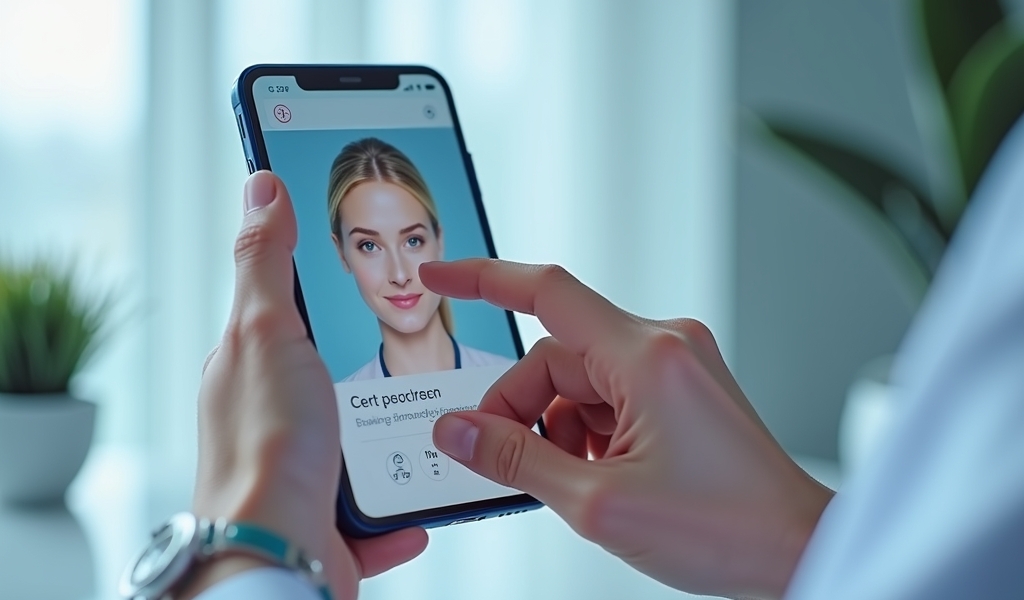Overview
This comprehensive guide outlines five effective home remedies for treating warts: over-the-counter salicylic acid (70-80% success rate), duct tape occlusion therapy, apple cider vinegar applications, essential oils with antiviral properties, and immune-boosting approaches. While most warts eventually disappear on their own within 1-2 years, these treatments can accelerate healing, though patients should seek medical attention for warts that bleed, change appearance, spread rapidly, appear in sensitive areas, or don’t respond to home treatment after three months.
Table of Contents
- Understanding Warts: The Basics
- Solution #1: Over-the-Counter Salicylic Acid Treatments
- Solution #2: Duct Tape Occlusion Therapy
- Solution #3: Apple Cider Vinegar Treatment
- Solution #4: Essential Oils
- Solution #5: Immune-Boosting Approaches
- When to See a Doctor
- Prevention Tips
- Conclusion
- Frequently Asked Questions
Are you dealing with a pesky wart that just won’t go away? You’re not alone. Millions of people develop warts each year, and while they’re usually harmless, they can be uncomfortable, embarrassing, and persistent. The good news is that many warts can be effectively treated at home, saving you time and money on doctor visits.
Understanding Warts: The Basics
Warts are small, rough growths on the skin caused by the human papillomavirus (HPV). There are several common types, including common warts (often found on hands), plantar warts (on the soles of feet), flat warts (smoother and smaller), and genital warts (a sexually transmitted infection requiring medical attention).
The virus enters through tiny breaks in the skin and causes an excess growth of cells on the outer layer of skin. Warts are contagious and can spread through direct contact or by touching surfaces contaminated with the virus. Some people are more susceptible to warts than others, particularly children, teenagers, and those with weakened immune systems.
While many warts will eventually disappear on their own (usually within 1-2 years), most people prefer to treat them due to discomfort or cosmetic concerns. Let’s explore five proven home remedies you can try.
Solution #1: Over-the-Counter Salicylic Acid Treatments
Salicylic acid is perhaps the most scientifically-backed home treatment for warts. It works by gradually breaking down the infected skin cells, layer by layer.
How to use it: These products come in various forms including liquids, gels, and adhesive pads. For best results:
- Soak the wart in warm water for about 5-10 minutes
- Gently file away the softened, dead skin with a pumice stone or emery board
- Apply the salicylic acid product according to package directions
- Repeat daily for best results
Most people see improvement within 1-3 months of consistent treatment. Studies show success rates of 70-80% for common warts. However, this method requires patience and persistence, and may cause mild skin irritation.

Solution #2: Duct Tape Occlusion Therapy
This surprisingly simple method has gained credibility in recent years. The theory is that covering the wart with duct tape irritates the skin and triggers an immune response.
The process:
- Cut a piece of duct tape slightly larger than the wart
- Apply the tape directly over the wart and leave it in place for 5-6 days
- Remove the tape, soak the area, and gently scrub with a pumice stone
- Leave the wart exposed overnight, then apply fresh tape the next morning
- Repeat for 1-2 months
A 2002 study published in the Archives of Pediatrics and Adolescent Medicine found this method more effective than cryotherapy for common warts. It’s inexpensive and painless, though it may cause skin irritation and isn’t aesthetically pleasing.
Solution #3: Apple Cider Vinegar Treatment
Apple cider vinegar (ACV) has acidic properties that may help fight HPV. While scientific evidence is limited, many people report success with this method.
Application method:
- Soak a cotton ball in apple cider vinegar
- Apply it to the wart and secure with a bandage
- Leave overnight and remove in the morning
- Repeat daily until the wart falls off (typically 1-2 weeks)
During treatment, you may notice the wart darkening, then forming a scab before falling off. It’s important to note that ACV can cause a burning sensation and may damage healthy skin, so apply petroleum jelly to the surrounding area for protection. Never use this method on facial warts or genital warts.
If you’re concerned about potential skin infections from wart treatments, be sure to maintain proper hygiene and follow instructions carefully.
Solution #4: Essential Oils
Certain essential oils have antiviral and immune-boosting properties that may help eliminate warts naturally.
Most effective options include:
- Tea tree oil (antiviral and antiseptic)
- Oregano oil (contains carvacrol and thymol)
- Thuja oil (traditionally used for wart treatment)
Always dilute essential oils with a carrier oil (like coconut or olive oil) at a ratio of 1-2 drops essential oil to 1 tablespoon carrier oil. Apply to the wart with a cotton swab 2-3 times daily. These oils may work by creating an environment hostile to the virus while supporting the skin’s healing process.
While generally safe, essential oils can cause skin irritation or allergic reactions in some people. Perform a patch test before full application, and never use them on genital warts or open wounds.

Solution #5: Immune-Boosting Approaches
Since warts are caused by a virus, strengthening your immune system may help your body fight the infection more effectively.
Consider these approaches:
- Vitamin supplementation, particularly vitamin C, zinc, and vitamin D
- A balanced diet rich in colorful fruits and vegetables
- Regular exercise and adequate sleep
- Stress management techniques like meditation or yoga
These methods work best as complements to direct wart treatments rather than standalone solutions. They may help prevent future warts while supporting your body’s natural defenses against the current infection.
According to the American Academy of Dermatology, boosting your immune system can indeed help your body fight off the virus that causes warts.
When to See a Doctor
While home treatments can be effective, certain situations warrant professional medical attention:
- Warts that bleed, change appearance, or cause significant pain
- Warts on the face, genitals, or anal area
- Multiple warts that spread rapidly
- Warts that don’t respond to home treatment after 3 months
- Any warts in people with diabetes or compromised immune systems
Healthcare providers can offer stronger treatments including cryotherapy (freezing), laser treatment, or prescription medications.
For persistent or concerning warts, consulting with a virtual dermatologist can provide expert guidance without leaving home.
Prevention Tips
To prevent warts from spreading or recurring:
- Avoid touching warts, and wash hands thoroughly after contact
- Cover warts with a bandage when participating in activities with others
- Don’t share personal items like towels, razors, or socks
- Wear flip-flops in public showers or pool areas
- Keep skin healthy and intact, as the virus enters through small cuts
The Centers for Disease Control and Prevention offers additional guidance on preventing HPV infections that can lead to warts.
Conclusion
While warts can be frustrating, these five home remedies offer effective options for many people. Over-the-counter salicylic acid remains the gold standard for at-home treatment, but alternative methods like duct tape therapy and diluted essential oils provide additional options with varying levels of scientific support.
Remember that patience is key—most wart treatments require weeks or months of consistent application before showing results. If your warts persist, worsen, or cause concern, don’t hesitate to schedule an online doctor visit for personalized advice and prescription treatments if necessary.
Our experienced doctors can evaluate your warts virtually, recommend the most appropriate treatment for your specific situation, and help you navigate your options for faster, more effective relief. Your skin health matters, and sometimes professional guidance makes all the difference in resolving persistent wart infections.
Frequently Asked Questions
How long does it typically take to remove a wart with home treatments?
Most home wart treatments require patience and consistency. Depending on the size and type of wart, as well as the treatment method used, you might notice improvement within 1-2 weeks, but complete removal typically takes 1-3 months of consistent treatment. Salicylic acid treatments often take 6-12 weeks for complete removal. Remember that results vary significantly from person to person.
Are warts contagious, and how can I prevent spreading them?
Yes, warts are contagious as they’re caused by the human papillomavirus (HPV). To prevent spreading them, avoid touching or picking at your warts, wash your hands thoroughly after any contact with the wart, don’t share personal items like towels or socks, cover warts with bandages during activities with others, and wear protective footwear in public shower areas. Also, avoid shaving over areas with warts as this can spread the virus.
Can online wart treatment be as effective as in-person dermatologist visits?
Virtual dermatology consultations can be very effective for wart diagnosis and treatment planning. A qualified online dermatologist can visually assess your warts, recommend appropriate over-the-counter treatments, prescribe medications if necessary, and provide follow-up care. While some in-office procedures like cryotherapy require in-person visits, many warts respond well to treatments that can be prescribed virtually, making online wart treatment a convenient and effective option for many patients.
Why do some warts keep coming back after treatment?
Recurrent warts typically happen for a few reasons: the HPV virus may remain dormant in skin cells even after the visible wart is gone; the treatment might not have completely eliminated the virus; your immune system may struggle to recognize and fight the virus; or you might be getting reinfected from another source. To reduce recurrence, complete the full treatment course even after the wart appears gone, boost your immune health, and maintain preventive measures like avoiding skin-to-skin contact with affected areas.
Are there any risks to treating warts at home?
While home treatments are generally safe, there are some risks to be aware of. These include skin irritation or burns from acids and other treatments, scarring if treatments are too aggressive, infection if the area isn’t kept clean, and delayed proper treatment if the growth isn’t actually a wart but another skin condition. It’s important to follow directions carefully, stop any treatment that causes severe pain or excessive irritation, and consult a healthcare provider if the wart changes appearance, bleeds easily, or doesn’t improve after 2-3 months of home treatment.

